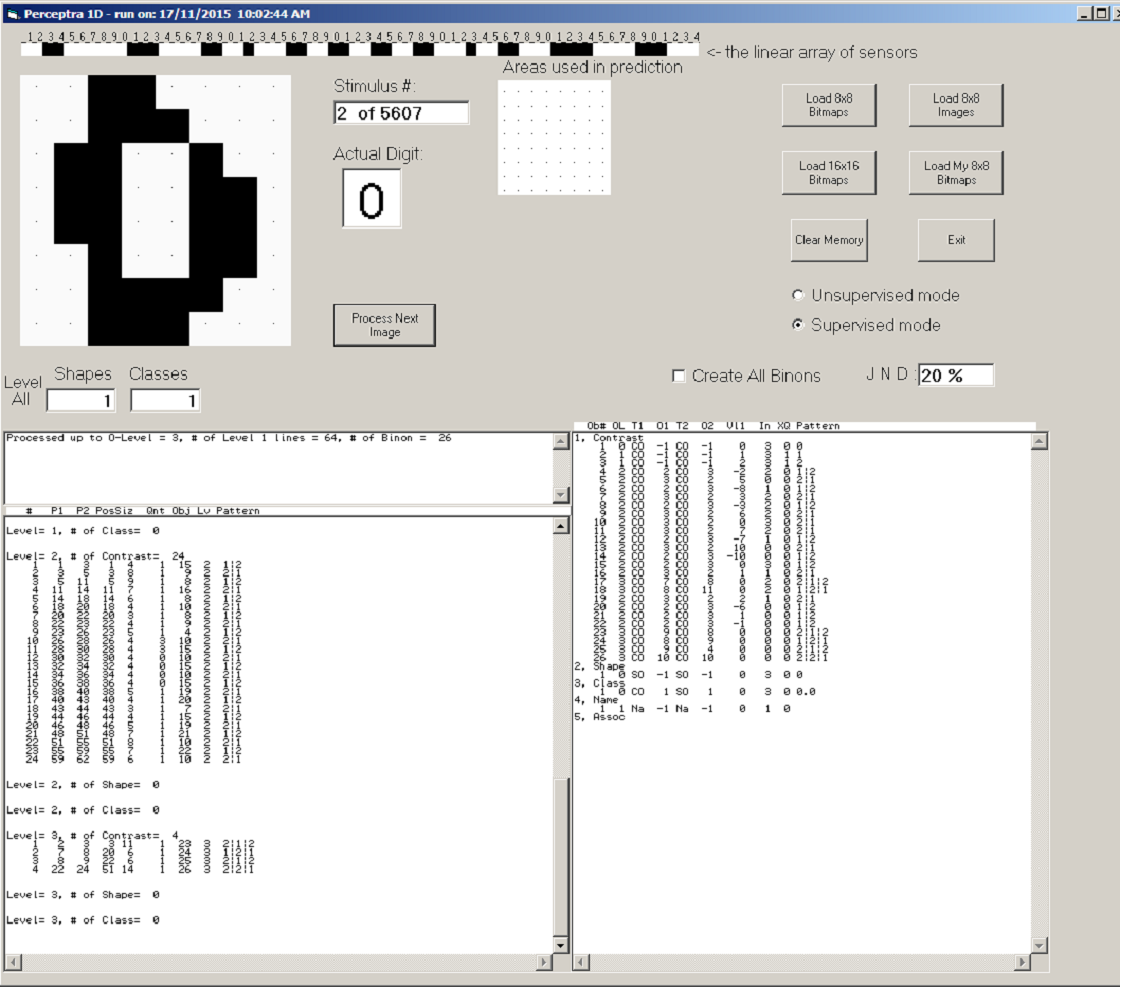2015-11-17
Perceptra 1D Test Run – 1 - Date: 17th Nov 2015
Binons with the interest level of 3 are parts and can only be combined adjacently. In this scenario the contrast object 10 is a part and is comprised of an equal quantity of black pixels followed by white pixels. It is found at position 51 and 59. However at 51 it is 4 and 4 while at 59 it is 3 and 3. The software has combined these two adjacently to produce contrast binon 26 with a value based on a quantity ratio of 1/1. The combination of source binons seems correct (2 binon #10s). However they two sources are of different sizes, 8 versus 6 pixels.
What would the right approach if we had 4 binon #10s in a row of the same size of 8 pixels an then 2 binon #10s in a row of the same size of 2 pixels? The repeat grouping would result in binon #10, quantity 4 and size 8 and binon #10, quantity 2 and size 2. When these two parts are combined adjacently what is used to describe the ratio of the resulting pattern. Is it 4/2 based on quantity, 8/2 based on relative size or 32/4 based on total size?
Maybe this is the opportunity to have a binon that is a part capture the size and quantity of its repetitions by adding the log of the size and quantity to represent the size times the quantity or overall size. The integer value of this would then allow for closely sized repetitions of the same part to be recognized as the same. This would be the Integer Sum of Logs (ISL). As an example, repetitions of binon #10, quantity 4 and size 8 would be the same as repetitions of binon #10, quantity 8 and size 4. It would be this ISL that would be subtracted for adjacent parts to form the IDL of a pattern.

